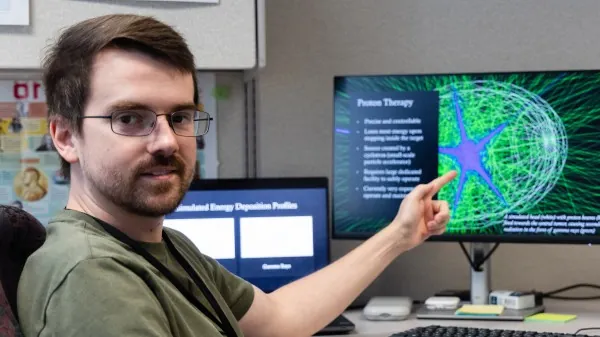
Unlocking the Power of Protons: A New Era in Cancer Treatment
2024-10-02
Author: Siti
Overview of Proton Therapy in Cancer Treatment
In an exciting leap forward for cancer treatment, physicists at the U.S. Department of Energy's Thomas Jefferson National Accelerator Facility, in collaboration with the Hampton University Proton Cancer Institute (HUPCI), are embarking on a groundbreaking study to enhance radiation therapy techniques. Building on more than a century of radiation therapy practice, these experts are now focused on revolutionizing how we approach the treatment of malignancies.
Innovative Investigation
The core of this innovative investigation revolves around proton therapy—an advanced type of radiation therapy that uses proton beams instead of traditional radioactive sources like cobalt-60. By potentially replacing these isotopes with accelerator-based proton therapy, researchers aim to minimize the radiological risks linked to radioactive treatment sources, paving the way for safer cancer care.
Leadership and Expertise
Leading this promising initiative is Cameron Clarke, a staff scientist at Jefferson Lab. Clarke's journey is particularly noteworthy; initially captivated by the field of astronomy, he transitioned to nuclear physics during his studies at Mississippi State University. His path led him through prestigious internships and research positions, ultimately culminating in his current endeavor aimed at not just advancing technology but also making tangible impacts on patient lives.
Challenges of Proton Therapy
Proton therapy, although promising, comes with its own set of challenges. Constructing the required particle accelerators and ensuring proper radiation shielding can be prohibitively expensive for medical facilities. However, its advantages shine through: the therapy can deliver highly localized doses of radiation, making it especially effective for tumors located near critical organs, as seen in brain or prostate cancers. This integrated safety mechanism not only minimizes collateral damage but also addresses significant concerns during pediatric treatments.
Government Support and Future Outlook
The U.S. Department of Energy's National Nuclear Security Administration is backing this ambitious study, which will extend through fiscal year 2025, championing the shift towards minimizing reliance on potentially hazardous radioisotopes in clinical settings.
Technical Advancements and Collaborations
Clarke and his team at BRIC are set to navigate the current technological landscape, identifying obstacles to replacing traditional radioisotope-based therapies while collaborating closely with medical professionals at HUPCI. Alongside their exploration, they will procure advanced computer planning systems for proton therapy to simulate and evaluate its potential effectiveness in cancer treatment, thus bridging the crucial gap between theoretical nuclear physics and practical medical application.
Global Implications and Future of Treatment
The implications of this research extend far beyond the lab: it holds the promise of refining cancer treatment protocols globally, enhancing patient outcomes while mitigating health risks associated with traditional treatments.
Conclusion
As Clarke aptly summarizes, his journey reflects a deep-rooted curiosity in understanding complex scientific principles and translating them into life-changing medical advancements. "Each day at Jefferson Lab is an opportunity to discover more about how nuclear physics can radically improve our health and lives," he enthuses. The world is watching closely as this innovative study progresses, positioning proton therapy as a beacon of hope in the relentless fight against cancer—a field eagerly awaiting the next breakthrough that could save countless lives.


 Brasil (PT)
Brasil (PT)
 Canada (EN)
Canada (EN)
 Chile (ES)
Chile (ES)
 España (ES)
España (ES)
 France (FR)
France (FR)
 Hong Kong (EN)
Hong Kong (EN)
 Italia (IT)
Italia (IT)
 日本 (JA)
日本 (JA)
 Magyarország (HU)
Magyarország (HU)
 Norge (NO)
Norge (NO)
 Polska (PL)
Polska (PL)
 Schweiz (DE)
Schweiz (DE)
 Singapore (EN)
Singapore (EN)
 Sverige (SV)
Sverige (SV)
 Suomi (FI)
Suomi (FI)
 Türkiye (TR)
Türkiye (TR)